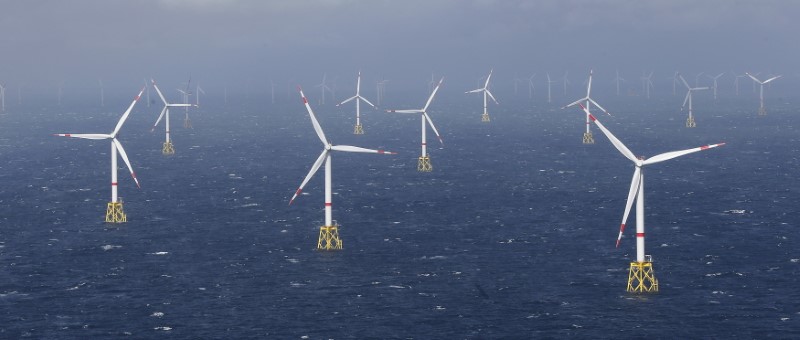This post was originally published on this site
https://i-invdn-com.akamaized.net/news/LYNXMPED9I0I9_M.jpg
Investing.com — Renewable energy stocks outperformed again on Tuesday, as the latest announcements from the U.K. government illustrated the momentum behind the vast shift transition to cleaner energy sources.
Siemens Gamesa (MC:SGREN) hit a 12-year high while Vestas Wind Systems, its biggest rival in the wind turbine business touched an all-time high after news that the U.K. will commit extra funding to ensure that the U.K. reaches its target of 40 gigawatts of offshore wind capacity by 2030 – enough (theoretically) to power every home in the country.
Wind farm operators Orsted (OTC:DOGEF) and Encavis (DE:HWAG) also hit all-time highs, while Nordex (DE:NDXG) stock also rose over 8%, although the German turbine company’s reaction was more to news of a big order in the U.S. which raised hopes that it can finally crack that market open.
The commitment to accelerate Britain’s green transition was one of the less noticed parts of a Conservative election manifesto last December that was more focused on pushing Brexit through. It’s being wheeled out again now, as the centerpiece of Prime Minister Boris Johnson’s speech to the Conservative Party’s (virtual) annual conference, as a welcome distraction from a second wave of the Covid-19 pandemic that is once again testing the government’s administrative capacity to the limit.
However, it is more than just a distraction. Covid-19 will, with luck, be tamed next year as vaccines finally reach the general population. The energy transition is the longer game, backed by a wall of institutional money that has fled fossil fuel stocks this year. The U.K.’s plan foresees the country reaching net zero carbon dioxide emissions by 2050, some 10 years before China under its new plan.
We’ve written here before that the renewables sector is now – like any other with a credible growth narrative – extremely expensive. Orsted now trades at 79 times trailing earnings, while its admittedly smaller and faster-growing peer Encavis trades at over 110 times. Vestas trades at 56x.
Such value as is left in the sector is largely buried deep within the balance sheets of the old integrated utilities, which have the power to release it through spinning off renewables businesses that should instantly command higher valuations. Italy’s Enel (MI:ENEI), Germany’s RWE (DE:RWEG) and even Electricite de France (PA:EDF) fall into this category (for all that EDF remains a play on the treatment of its nuclear business, as the last week’s price action has shown). Engie SA (PA:ENGIE) may well join the ranks now that it has money from the sale of its Suez stake to throw at new projects.
But even with such caveats, every further hard commitment by governments to push the green agenda make the current multiples less demanding. The growing hints from the European Central Bank that it will actively intervene in credit markets to ensure easier access for renewable companies than for fossil fuel ones do likewise.
Then there is the ultimate glittering prize for investors in the sector: the chance that the U.S. elections in November will finally remove Climate Change deniers and the oil and gas lobby from the levers of power at federal level, restoring at least some of the federal tax advantages that the industry had before 2016 and putting the U.S. irrevocably back into the Paris Climate Accord, with all that that implies for green mandates. The best may still be yet to come, even allowing for all the things that need to go right over the next decade.

